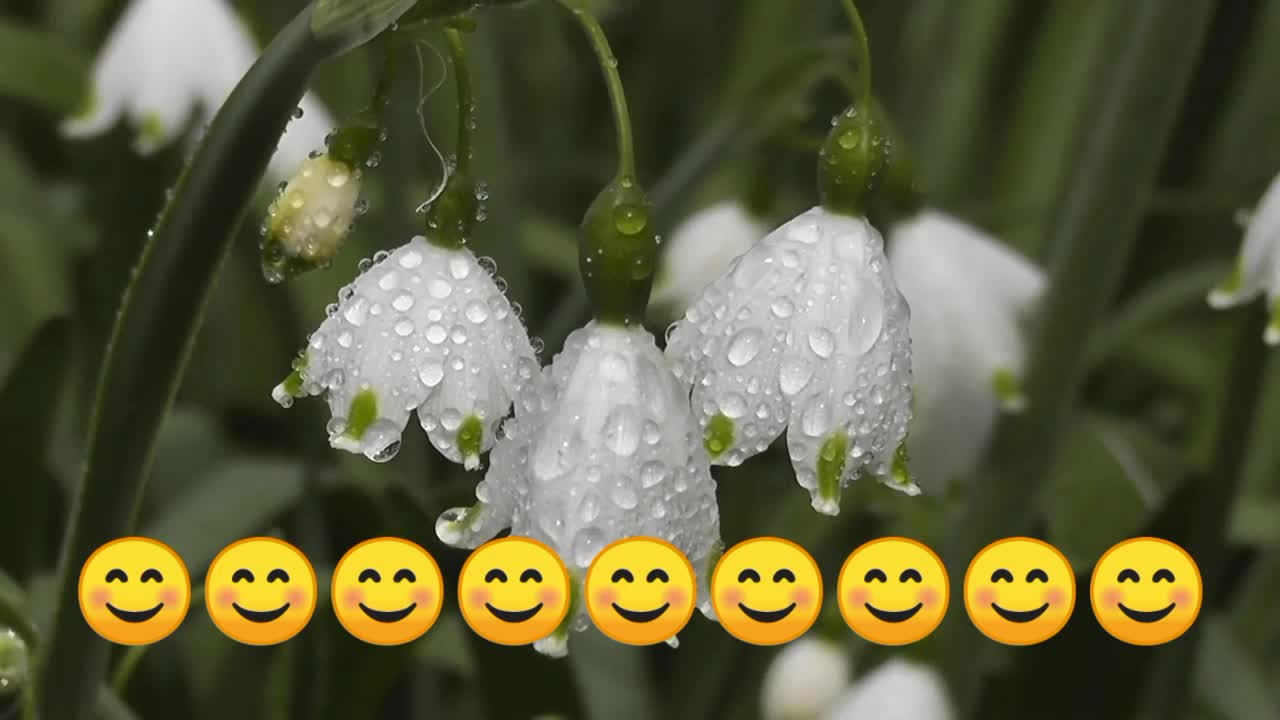Premium Only Content

How to draw a snowdrop flower,when do snow drops bloom.
Galanthus (from Ancient Greek γάλα, (gála, "milk") + ἄνθος (ánthos, "flower")), or snowdrop, is a small genus of approximately 20 species of bulbous perennial herbaceous plants in the family Amaryllidaceae. The plants have two linear leaves and a single small white drooping bell-shaped flower with six petal-like (petaloid) tepals in two circles (whorls). The smaller inner petals have green markings.//
Scientific classificatione
Kingdom:
Plantae
Clade:
Tracheophytes
Clade:
Angiosperms
Clade:
Monocots
Order:
Asparagales
Family:
Amaryllidaceae
Subfamily:
Amaryllidoideae
Tribe:
Galantheae
Genus:
Galanthus
L.
Type species
Galanthus nivalis
L.
Synonyms[1]
Erangelia Reneaulme ex L.
Acrocorion Adans.
Chianthemum Siegert ex Kuntze
Galanthus nivalis: Flora von Deutschland, Österreich und der Schweiz, 1885
Snowdrops have been known since the earliest times under various names, but were named Galanthus in 1753. As the number of recognised species increased, various attempts were made to divide the species into subgroups, usually on the basis of the pattern of the emerging leaves (vernation). In the era of molecular phylogenetics this characteristic has been shown to be unreliable and now seven molecularly defined clades are recognised that correspond to the biogeographical distribution of species. New species continue to be discovered.
Most species flower in winter, before the vernal equinox (20 or 21 March in the Northern Hemisphere), but some flower in early spring and late autumn. Sometimes snowdrops are confused with the two related genera within the tribe Galantheae, snowflakes Leucojum and Acis.//
Description Edit
General Edit
All species of Galanthus are perennial petaloid herbaceous bulbous (growing from bulbs) monocot plants. The genus is characterised by the presence of two leaves, pendulous white flowers with six free perianth segments in two whorls. The inner whorl is smaller than the outer whorl and has green markings.[2]
Vegetative Edit
Leaves
These are basal, emerging from the bulb initially enclosed in a tubular membranous sheath of cataphylls. Generally, these are two (sometimes three) in number and linear, strap-shaped, or oblanceolate. Vernation, the arrangement of the emerging leaves relative to each other, varies among species. These may be applanate (flat), supervolute (conduplicate), or explicative (pleated). In applanate vernation the two leaf blades are pressed flat to each other within the bud and as they emerge; explicative leaves are also pressed flat against each other, but the edges of the leaves are folded back (externally recurved) or sometimes rolled; in supervolute plants, one leaf is tightly clasped around the other within the bud and generally remains at the point where the leaves emerge from the soil[3] (for illustration, see Stearn[4] and Davis[5]). In the past, this feature has been used to distinguish between species and to determine the parentage of hybrids, but now has been shown to be homoplasious, and not useful in this regard.
The scape (flowering stalk) is erect, leafless, terete, or compressed.[6]
Reproductive Edit
Inflorescence
At the top of the scape is a pair of bract-like spathes (valves) usually fused down one side and joined by a papery membrane, appearing monophyllous (single). From between the spathes emerges a solitary (rarely two), pendulous, nodding, bell-shaped white flower, held on a slender pedicel. The flower bears six free perianth segments (tepals) rather than true petals, arranged in two whorls of three, the outer whorl being larger and more convex than the inner whorl. The outer tepals are acute to more or less obtuse, spathulate or oblanceolate to narrowly obovate or linear, shortly clawed, and erect spreading. The inner tepals are much shorter (half to two thirds as long), oblong, spathulate or oblanceolate, somewhat unguiculate (claw like); tapering to the base and erect. These tepals also bear green markings at the base, the apex, or both, that when at the apex, are bridge-shaped over the small sinus (notch) at the tip of each tepal, which are emarginate. Occasionally the markings are either green-yellow, yellow, or absent, and the shape and size varies by species.
Androecium
The six stamens are inserted at the base of the perianth, and are very short (shorter than the inner perianth segments), the anthers basifixed (attached at their bases) with filaments much shorter than the anthers; they dehisce (open) by terminal pores or short slits.
Gynoecium, fruit and seeds
The inferior ovary is three-celled. The style is slender and longer than the anthers; the stigma is minutely capitate. The ovary ripens into a three-celled capsule fruit. This fruit is fleshy, ellipsoid or almost spherical, opening by three flaps, with seeds that are light brown to white and oblong with a small appendage or tail (elaiosome) containing substances attractive to ants, which distribute the seeds.
The chromosome number is 2n=24
Floral formula:
-
 LIVE
LIVE
TheAlecLaceShow
13 hours agoLive at CPAC | Interviews with Dean Cain, Rep. Comer and more! | The Alec Lace Show
464 watching -
 LIVE
LIVE
Major League Fishing
2 days agoLIVE Tackle Warehouse Invitationals, Stop 1, Day 2
549 watching -
 LIVE
LIVE
I_Came_With_Fire_Podcast
10 hours agoNOC Spy: CIA uses SATANIC RITUAL ABUSE to make SLEEPER Cells
426 watching -
 28:42
28:42
CatfishedOnline
1 day ago $0.85 earnedWoman Insists Morgan Wallen Relationship Isn't a Romance Scam!
6.98K -
 16:25
16:25
TSPLY
23 hours agoNew CNN / MSNBC Meltdown Moments Of Getting Mad At Donald Trump In February
12.8K9 -
 8:33
8:33
scoutthedoggie
3 hours agoAirsoft War Games Scotland
12.8K2 -
 4:56
4:56
Kirill MultitoolOfficial
1 day ago $0.67 earnedSurvival TIPS and usefull bushcraft DIY in the wild
33.5K3 -
 27:25
27:25
ArturRehi
1 day agoThis is How Dictatorships are Formed
8.13K3 -
 59:35
59:35
AlaskanBallistics
16 hours ago $0.28 earnedI Love this Gun Episode # 11
6.19K1 -
 1:21:01
1:21:01
BibleUnbound
19 hours agoThe Complete Story of Moses: The Man of God
18K3